With a population of 13 million people, from the busy morning markets to the nights filled with vibrant neon lights, from the tall skyscrapers to secluded temples, the largest city of Japan offers its visitors an incomparable experience. In this article I will try to give you a glimpse of Tokyo and write some tips of how to utilize your time and see the city's highlights in just a day.
"More than any other city, Tokyo demonstrates that 'city' is a verb and not a noun" - Toshiko Mori
My first touch to Japan happened to be in AUG 2015. Have to mention that this is not the most apropriate time to visit the country as it's summer, very hot summer. Despite that, the moment I saw that I'm scheduled for a flight to Narita International Airport I knew that nothing will stop me to explore the city. Not even the fact that the hotel we were staying was 2:30 h away from the city of Tokyo.
It seems I'm not the only one that had appetite for this destination. Other two cabin crew, Marta from Poland and Paula from Argentina, are as much excited as I am to take the tiring journey with bus and make it to the city the next day. We exchange some thoughts straight after the flight and my fears about getting stucked with the wrong crew (which is always a real threat that could spoil your layover) are gone.
While in the bus, on our way to the hotel, we already made a rough plan of what to be seen not without the help of a few Japaneese girls from the crew. I always appreciate these small notes on paper given to me by locals:
The next day at 07:00 am we hop on the shuttle from the hotel to the Airport. From Terminal 2 we take a bus that will drop us 2:15h later at Ginza station.
It seems that many people think that the Tokyo subway train system is very complicated which is not true. People in Japan are famous for how well-organized and how particular about signs they are. The metro is not an exception so the only thing which you need is a metro map in your hand:
The enourmous Tokyo subway net consists of Tokyo Metro and Toei Line. Actually the system is pretty easy and convenient. You can find metro guides everywhere and get info in English about ticket fares.
We decide to buy Tokyo Metro One-day Open Ticket that costs 600 YEN (JPY) = ~4 EUR
The purchase of the ticket is definitely worth it and it's a great way to explore the city without wasting time. This day we ride the metro at least 10 times, changing lines and stations like crazy. So to avoid confusion I will be giving you details on each step that we make using the public transport.
What about the experience of riding the Tokyo subway? I was expecting limited space, noise and that frantic atmosphere that is typical for a big metropolis like Tokyo. In fact on each trip we had available seat, there was no crowds and everything was quite (maybe because of the fact that 90% of the people are looking at their phones instead of talking to each other) and peaceful.
We decide to buy Tokyo Metro One-day Open Ticket that costs 600 YEN (JPY) = ~4 EUR
The purchase of the ticket is definitely worth it and it's a great way to explore the city without wasting time. This day we ride the metro at least 10 times, changing lines and stations like crazy. So to avoid confusion I will be giving you details on each step that we make using the public transport.
What about the experience of riding the Tokyo subway? I was expecting limited space, noise and that frantic atmosphere that is typical for a big metropolis like Tokyo. In fact on each trip we had available seat, there was no crowds and everything was quite (maybe because of the fact that 90% of the people are looking at their phones instead of talking to each other) and peaceful.
First thoughts about Tokyo? It's different. It's huge, it's chaos but at the same time it's so damn organized. It busy but it could be peaceful too. You can find everything you are looking for in a city like Tokyo.
Around 9:30 we are already at Ginza Station. From here we took Hibiya Line (H) from stop H08 to H10 and here we go, we are at Tsukiji Fish Market. It's better to go there early in the morning as this is the peak hour for fish trading.
Have you ever watched the video "Rather be" by Clean Bandit? When the video came out I thought it's brilliant but I never thought that one day I will visit the place it was filmed.
So yes, this morning I was at Tsukiji Market, the same place the band made their famous video that shows the atmosphere of the place in a perfect way: constant traffic of scooters, delivery trucks, buyers and vendors.
Tsukiji Fish Market is the largest wholesale seafood market in the world. Each day 400 types of seafood are handled here.
Due to its increased popularity (you will be given even a map of the market at the entrance) and many tourists walking through the work area among the many traders and moving vehicles, visitors are now not allowed in the inner market and can only visit the outer market after 9am.
This is exactly what we did and it's worth it to wake up early and see this crazy place. This is definitely The Kingdom of fish world. I never thought about how diverse and rich could be the seafood. This market is the place to discover it:
Tsukiji Market is also popular because of the fact that here you can not only buy but also eat fresh fish and seafood served as sushi or "sashimi". Because of our limited time we didn't have time for this so we jump to our second stop: Senso-ji temple.
If you want to go there from the Fish Market take Hibiya Line(H) again from H10 (Tsuikiji) to H17 (Ueno). From Ueno change to Ginza Line (G) (G16) and go to G19 (Asakusa).
In front of Asakusa station I saw a beautifully arranged show window with food. It took me some time to realize that actually the food is fake. Plastic food replicas are something common in Japan and they have been raised to an art form. This only comes to show that food here is turned to a religion. The food displays are called sampuru, derived from the English word "sample":
The plastic models are mostly handmade from polyvinyl chloride and carefully sculpted to look like the actual dishes.
It's an interesting fact that the plastic food industry in Japan has revenues of bilions of yen per year. A single restaurant may order a complete menu of plastic items costing over a million yen!
3 minutes walk down the street from Asakusa station and you will reach Senso-ji.
The most popular spot in Asakusa is the Kaminarimon which is the main gate of Senso-ji temple. You will recognize it easily by the huge lantern in the middle of the gate:
The approximately 250 m long approach from Kaminarimon Gate to Hozomon Gate is called Nakamise-Dori. It is said that the Nakamise dori street is one of the oldest shopping areas in Japan and is the main approach to Senso-ji temple.
Various goods are sold here: the beautifully hand-held Japanese fans, chopsticks, the magnets that the tourists can not live without, etc.
So we are finally standing in front ot Senso-ji. This temple also known as Asakusa Kannon is a Shinto shrine. Shinto is considered Japan's most ancient religion based on harmony and traditional values.
In the Shinto faith the divine spirit (Kami) is found in nature and righteous people. Senso-ji temple is dedicated to the souls of the Emperor Shoken and Empress Shoken.
Before you enter the temple you have to purify yourself. All temples in Japan have small fountains in front. These are called Chozuya / Temizuya, people use them to “purify” themselves with water before going inside the Temple or Shrine:
We had a quick look of the temple but most interesting part to us are the fortune-telling paper strips - O-mikuji.
O-mikuji is like a lottery. You shake a small box and then a tiny bamboo stick will fall out. The stick had a number on it and this number match the number of one of the wooden boxes (numbers are written in Japanese so it could take a while) full with fortune strips. I'm familiar with the procedure because I did it once in Bangkok where a monk explained to me what I'm supposed to do. Now my curiosity is even bigger because I found out that in Japan they have the same!
A long time ago the omikuji were used as decision guidance. People wanted to know from the god of a shrine if their plan is going to be successful or not. You can get a very good luck but also a bad one. I like this because life is not always smooth and easy so does the forute strips.
The custom is that you leave the omikuji behind. If it’s not a good fortune you have to tie it to a pine tree. Well, nowadays people leave even good fortune strips behind. And they use not only pine tree but everything that they have around :)
My fortune strip predicts an Excellent fortune. The strips are translated in English so you don't have to bother other people and ask for translation. Mine is telling me the following:
"Trouble and disaster are getting off as time passes by, sign of the fortune is opening and coming to us. Your fame & honour rise over society. Those old and ancient got renewed then you can get income again .
Getting success in life, and wealth, you are real busy and prosperous. "
We took a short walk in the small streets on our way back to the metro:
My passion about tall building takes us to Tokyo Tower.
If you want to jump from Senso-ji temple to the 250m observation desk, go back to Ginza Line (G19) and go to Ueno (G16). From there change to Hibiya Line (H17) and go to Kamiyacho (H05).
Speaking of tall building you have many options to see Tokyo from above. One of them is to go to Tokyo Skytree (but the ticket costs more than ¥2000 which was too expensive for us) or go to Tokyo Metropolitan Government Building in Shinjuku and take the lift to 52nd floor for free (this one was too far away from the place we were at that moment).
The ticket to the Main Observatory of Tokyo Tower costs ¥900. The view is really nice and you can hide from the sun for a while:
Our last stop is Shibuya. From Kamiyacho (H05) take the metro to Kasumigaseki (H06). Change to the green line, Chiyoda Line (C08) to Omote-sando (C04). Are you following the map? You better do it :) From Omote-sando switch again to Ginza Line (G02) ang get off on Shibuya Station (G01).
Shibuya is one of Tokyo's most colorful and busy districts. Always crowded with people Shibuya is the heart of the youth fashion and culture. Huge stores, clubs with live music, bars & restaurants, you can never feel bored here.
Shibuya is one of Tokyo's most colorful and busy districts. Always crowded with people Shibuya is the heart of the youth fashion and culture. Huge stores, clubs with live music, bars & restaurants, you can never feel bored here.
Next to the entrance of Shibuya station you will find the statue of the faithful dog Hachiko (the breed is called akita-inu) who has waited for his master for 9 years and became the model for the movie "Hachi: A dog's tale". Everytime when I listen to that story I think for my dog who is waiting me back home and I start being emotional:
Next to the statue of the faithful dog, on the same square having its name you will find a Тourist information center which looks like a train. Original idea, isn't it? Maps in Japanese/English/Chinese/Korean language are provided here.
It would be a shame to come to Tokyo and not take a walk across the famous intersection outside Shibuya Station, called "Scramble Crossing". It is said that half-million people cross a day. While watching thousands of people who cross the street without bumping against others you think that even the chaos in Japan is organized.
So I turned another dream into reality - even for a day I got lost in this beautifully organized chaos named Tokyo ♥
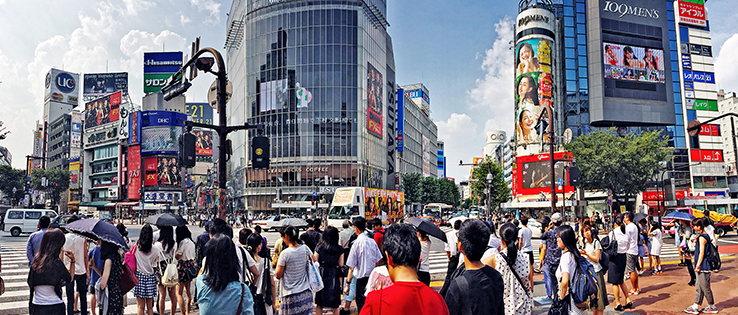
















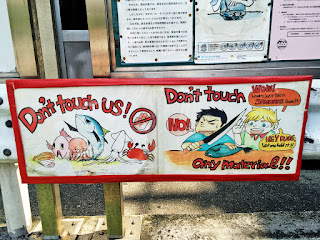





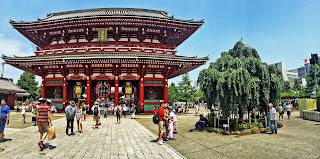





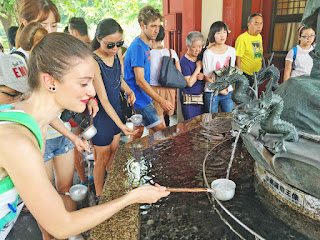








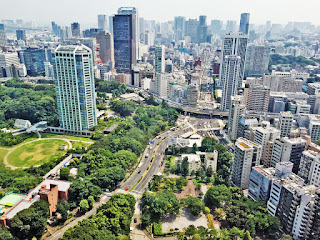


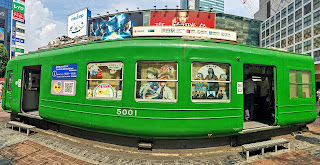







Comments
Post a Comment